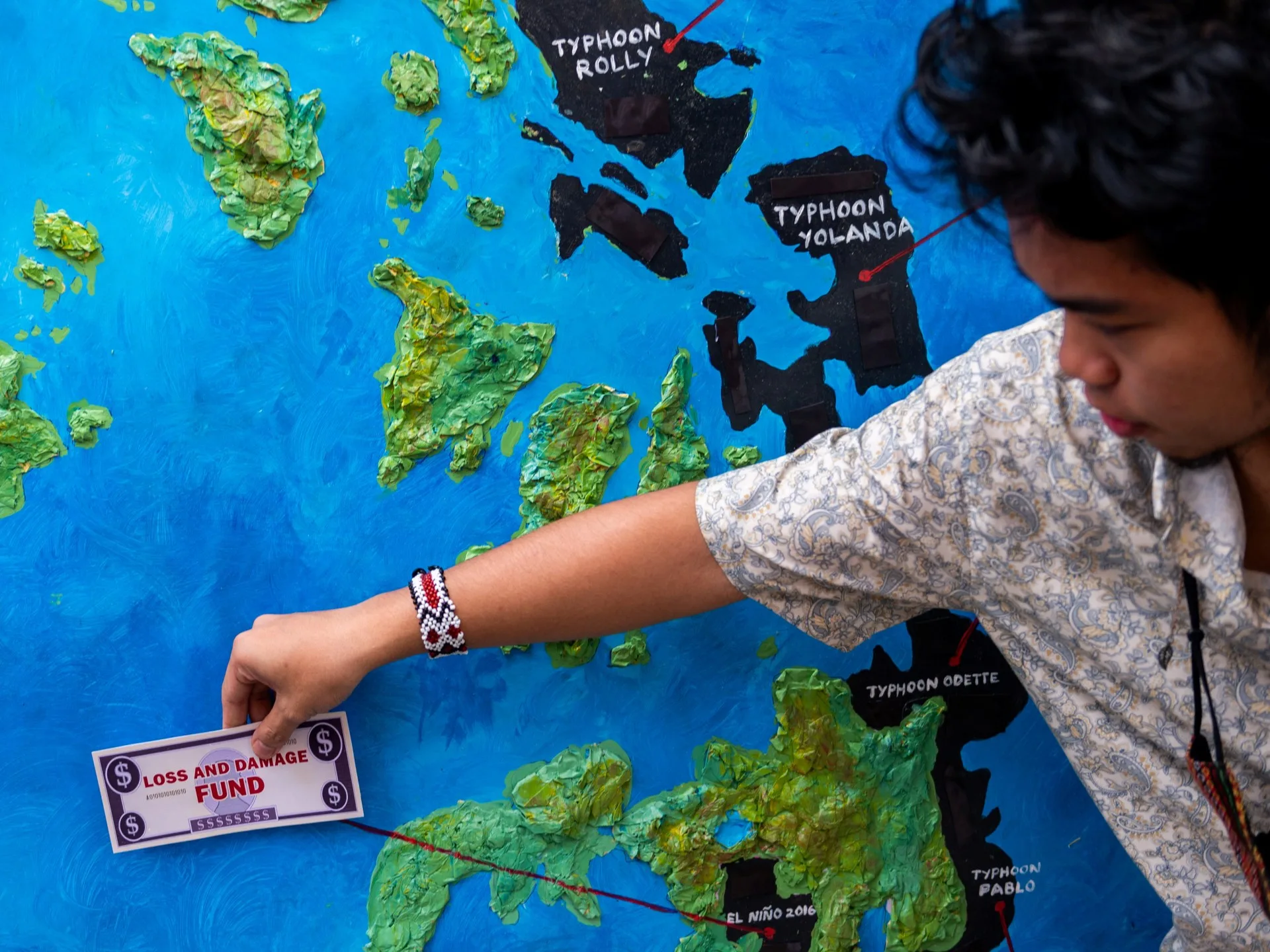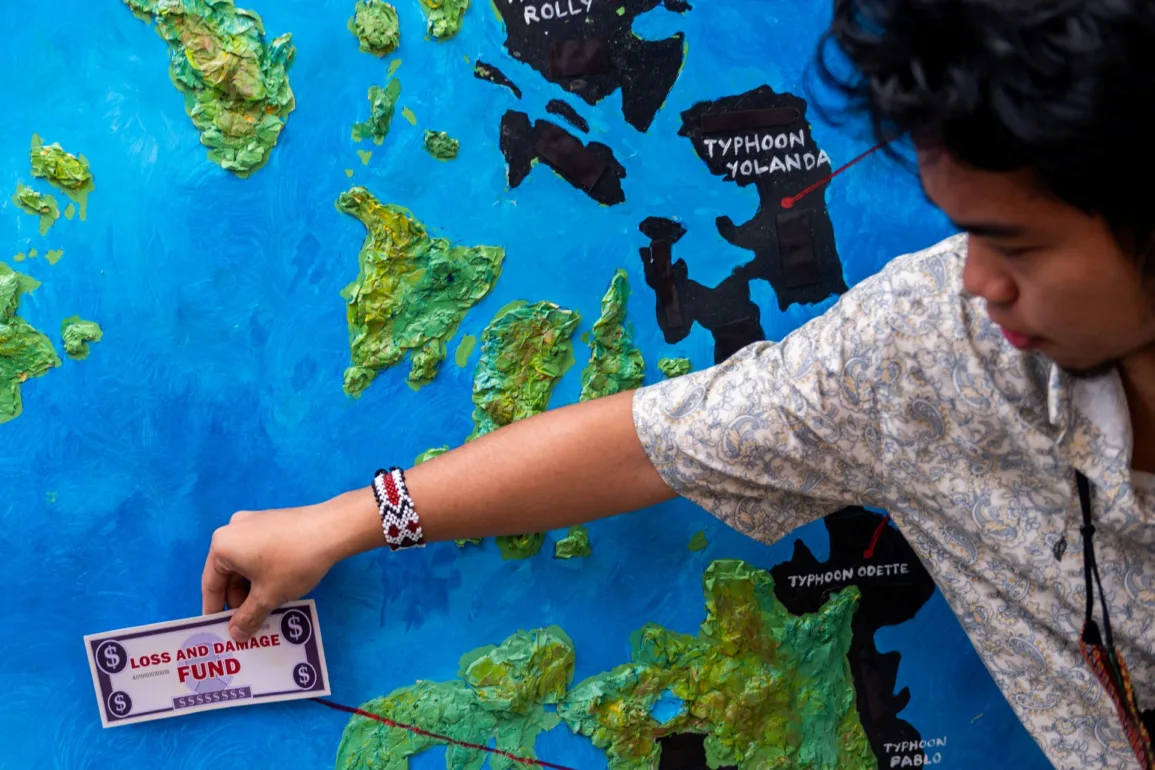
The launch of a ‘loss and damage’ fund on Thursday at the start of the United Nations COP28 summit marks a landmark moment but is only the first in a series of necessary steps in the fight for climate justice, say experts and activists.
For years, climate-vulnerable countries have asked wealthier nations – who have largely amassed their riches through unbridled CO2 emissions – to take their fair share of responsibility for the climate crisis and pay up for the damage caused.
The United States is responsible for about 20 percent of global historical CO2 emissions since the mid-1800s, followed by China with just over 10 percent. The yearly carbon footprint of the average American is the same as that of more than 500 Burundians – a country that is also regularly ranked as one of the most vulnerable to climate change and one of the world’s most food insecure.
The fund launched on the first day of the UN climate negotiations this year is meant to address that imbalance. The establishment of the fund was met with a standing ovation at COP28 in Dubai. But climate campaigners and civil society groups say the announcement isn’t nearly enough.
“We welcome the early adoption, we welcome the pledges. Obviously, we’re hoping to see more come in,” Michai Robertson, lead finance negotiator for the Alliance Of Small Island States (AOSIS), told Al Jazeera.
“There are many things that need to happen and policies that we need to decide on before one dollar can get to developing countries to address loss and damage needs,” said Robertson, whose group lobbies the UN on behalf of low-lying countries, including island nations threatened with extinction due to rising sea levels.
“The gavelling of the loss and damage fund marks a pivotal moment in navigating our collective response to climate change and establishing climate justice,” said Lina Ahmed, a policy adviser at Germanwatch, an environment and development NGO.
“The applause that resonated in the opening plenary, though heartfelt, carried with it an awareness that the fund’s design is far from ideal,” Ahmed added.
At the COP27 summit in Egypt last year, negotiators reached a landmark decision to set up the fund to benefit countries that have been hit the hardest by the climate crisis, while also being the least responsible for it.
Wealthy nations have long been reluctant to address the issue, fearing it could open the way to other reparations claims – such as for slavery.
In UN jargon, ‘loss and damage’ refers to climate finance aimed at addressing the impact of irreversible losses that result from a heating planet. It includes disasters linked to extreme weather, but also slow onset events such as sea level rise. It covers both economic and non-economic losses, including loss of life, biodiversity, or cultural heritage.
“We have delivered history today,” the United Arab Emirates’ COP28 president Sultan al-Jaber told delegates in Dubai as the fund was launched. “This sends a positive signal of momentum to the world.”
A ‘premature celebration’
For climate-vulnerable countries, this week’s decision marks a stepping-stone in their efforts to be recognised as shouldering the burden – and for the most part, footing the bill – of the climate crisis.
But the work, experts say, starts now.
“I think this is a premature celebration,” said Ritu Bharadwaj, a researcher in climate governance and finance at the International Institute for Environment and Development (IIED), in an interview from Dubai, where she is an observer in the negotiations.
“Even though the recent pledges are a step in the right direction, I would say they significantly fall short. If you look at the amount of funds that we need for addressing loss and damage, that bill runs into trillions,” she told Al Jazeera. “The commitment we have received collectively comes to around $400m. This is a very small fraction of what is critically needed.”
So far, the European Union has pledged 225 million euros ($246m), the United Arab Emirates $100m and the United Kingdom $40m. The United States said it will contribute $17.5m, while Japan said it will set aside $10m towards the fund – two pledges that have been particularly criticised as too small in comparison with the two countries’ contributions to the climate crisis.
During the frantic negotiations that took place since last year’s summit, some wealthy nations – particularly the US – insisted that countries should contribute to the fund on a voluntary basis. They also want to see high-emitting emerging powers, including China and Saudi Arabia, contribute their fair share – one reason why the pledge made by the UAE has been particularly welcomed since it is seen as broadening the spectrum of countries that could contribute.
Avoiding ‘double accounting’, more debt for the poorest
For many though, the announcement carries a sense of deja vu.
Back in 2009, developed countries pledged to provide $100bn a year in climate finance to developing nations by 2020 to cover adaptation and mitigation needs. That target has yet to be met.
According to a recent study by the Overseas Development Institute, the US can be seen as “overwhelmingly responsible” for that failure. The study, which looks at what countries should be paying as their “fair share” of climate finance based on, among other indicators, their historical responsibility, says the US falls short by roughly $34bn a year.
“We will need to see whether these commitments or pledges are genuinely new and additional, or if it is going to be a double accounting of the [existing] adaptation fund commitment,” said Bharadwaj, “and also how much of it will come with conditionality.”
The fund is to be managed temporarily by the World Bank – something that close observers of the negotiations see as potentially problematic.
“The World Bank’s traditional model has always been to provide more loans rather than grants, and many of these countries are already suffering from a huge debt burden,” Bharadwaj added.
“The fund has to be given on the basis of climate justice, on the basis of vulnerability, not on the basis of growth and the development agenda.”



